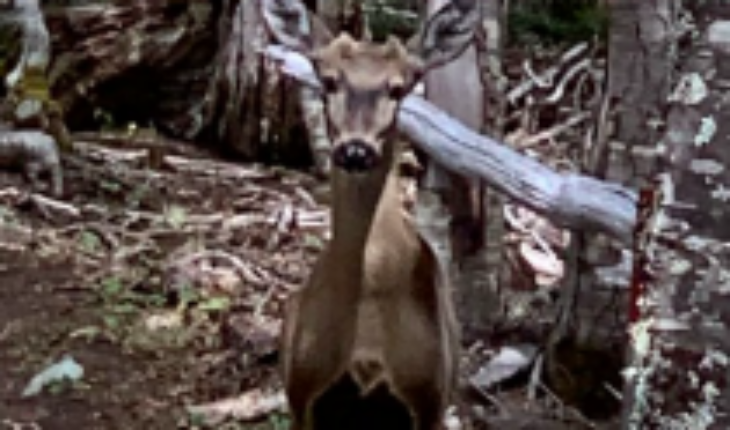Two tourists touring the Magallanes National Reserve captured the first images of a huemul traveling along one of the trails of this protected wilderness area managed by the National Forestry Corporation (Conaf) in Magallanes.
It is a sighting of great importance for Conaf, because in the 91 years of the Magallanes National Reserve, there was no visual record of its presence. Only in 2021, the administrator of the Magallanes National Reserve, Marcelo Martínez, found some footprints and feces of the species that denoted its presence in the Las Minas river sector.
It should be noted that in 2021, after strong winds that were registered in Punta Arenasy with a difference of just one week, two specimens of huemul were found that were later transferred to the interior of the Laguna Parrillar National Reserve.
For the deputy regional director of Conaf, Mauricio Ruiz, “this first audiovisual record of the huemul in the reserve allows us to propose the existence of a biological corridor between the Laguna Parrillar National Reserve and the Magallanes National Reserve, considering that the presence of this species in the country ranges from the Ñuble region to the Brunswick Peninsula in the extreme south”.
The regional director (s) pointed out that this finding forces to strengthen conservation policies and measures in the Magallanes National Reserve, since the impact of illegal entry of domestic animals such as horses, cattle and dogs, as well as people entering in motor vehicles, affect the integrity of the ecosystem they require for their survival.
The huemul (Hippocamelus bisulcus) is an endemic species of Chile and Argentina whose population and distribution range have been reduced considerably, estimating that its current population does not exceed 2,500 individuals between both countries, distributed in small fragmented subpopulations from Chillán to the Brunswick peninsula in Magallanes, in our country.
In the region of Magallanes and Chilean Antarctica, its presence is confirmed in 5 Protected Wild Areas: Bernardo O’Higgins National Park, Torres del Paine National Park, Kawésqar National Park, Laguna Parrillar National Reserve and now in the Magallanes National Reserve.
The occupation, modification and fragmentation of their habitat, together with hunting and the introduction of livestock and exotic species, are the main threats that cause their decline. In this context, the huemul is considered the most endangered deer of the Neotropics and was categorized as Endangered.
In Chile, it has been protected by the Hunting Law No. 19,473 since 1929 and in June 2006 it was declared a Natural Monument by the Ministry of Agriculture. It is classified as Endangered, at the national level, according to the Regulations of Classification of Species.
Follow us on





